Enjoying our beaches – without polluting them
Researchers from Kiel present first combined systematic study on litter in the micro and macro spectrum on Schleswig-Holstein's Baltic Sea beaches
Schleswig-Holstein's beaches annoys locals and visitors alike. A study conducted in the framework of the Future Ocean research network at Kiel University (Christian-Albrechts-Universität zu Kiel, CAU) reveals: Most of the litter comes directly from beach use and is not washed onto the beaches from the sea. This means that this pollution can easily be avoided. Interestingly, no clear correlation was found between the density of microplastics in the sediment and the amount of visible larger pieces of litter. For their analysis, the scientists from GEOMAR Helmholtz Centre for Ocean Research Kiel and the Kiel Science Factory, a joint institution of Kiel University and the Leibniz Institute for Science and Mathematics Education (IPN), examined ten beaches along the Schleswig-Holstein Baltic Sea in spring and autumn 2018. With their publication in the scientific journal Marine Pollution Bulletin, the researchers have now presented the first combined systematic study of litter in the micro- and macro spectrum on Schleswig-Holstein's Baltic Sea beaches.
“Microplastics and larger litter on beaches are a well-known problem – and we can easily do something about it,” explains Dr. Mark Lenz. The marine biologist at GEOMAR is head of the study and first author of the publication. “Our data shows the connection between beach use and pollution surprisingly clearly: In autumn, at the end of the season, beaches are twice as polluted as in spring. In places where beaches were regularly cleaned, the increase was smaller than in those without. In addition, there was significantly more paper, cardboard and especially cigarette butts in autumn than at the beginning of the season. So, Schleswig-Holstein's beaches would be much cleaner and the coastal ecosystems healthier if everyone disposed of their rubbish at the end of a beach visit.”
The evaluations at the beaches of Holnis, Falshöft, Boknis, Schwedeneck, Schönberg, Hohwacht, Flügge, Staberhuk, Kellenhusen and Travemünde followed the standardised protocol for recording macro litter of the Convention for the Protection of the Marine Environment of the North-East Atlantic (Oslo-Paris Convention, OSPAR): Three people systematically collected all rubbish items larger than 2.5 centimetres along a 100-metre stretch parallel to the shoreline and assigned them to a predefined category. After drying, the total weight of the finds was recorded. In addition, the researchers took sediment samples, extracted the microplastic particles and analysed the type of plastic.
“In spring we found between 38 pieces of mrine litter in Holnis and 241 in Travemünde. A good 40 per cent consisted of plastic, almost 35 per cent of paper, cardboard and cigarette butts and 15 per cent glass. In autumn, the range was between 27 parts in Holnis and 713 in Schönberg. Paper, cardboard and cigarette butts then made up more than 60 per cent, a good quarter was plastic and only 4 per cent glass,” summarises Dr Lenz.
Overall, no correlation was found between the amount of macro waste and micro plastic. However, it also became clear that our beaches are not free of microplastics. The small particles were found in almost all sediment samples in quantities between 2 and 28 particles per kilogram of sand. Even though these densities are still moderate compared to other locations, this still means that there are probably millions of the artificial microparticles on each of our beaches. They are not degraded in nature and can therefore accumulate over time. Whether the amount of microplastics will continue to increase in the future could be revealed by further studies that build on the research now presented. The effects of microplastic on the environment have not yet been conclusively studied, but it is known that hundreds of animal species ingest it in their food.
A comparison with other locations around the Baltic Sea showed that the amounts of litter were similar to those in Mecklenburg-Vorpommern on average. Beaches in Lithuania and Poland were significantly more polluted, beaches in Denmark about as clean as the less frequented ones in Schleswig-Holstein. The researchers attribute the low dominance of washed-up plastic waste in Schleswig-Holstein to the orientation of the coast and the prevailing direction of wind and currents.
GEOMAR and the Kiel Science Factory offer information and scientific programmes for pupils and teachers on beach litter and microplastics. “In the Kiel Science Factory, we have been investigating the beaches around the Kiel Fjord for more than ten years. Despite beach cleaning, the amount of litter is high. Now, for the first time, we have data for the entire Schleswig-Holstein Baltic Sea coast on which we can build - a good basis for future investigations," says marine biologist Dr. Dennis Brennecke, who helped carry out the sampling for the Kiel Research Workshop. Since the survey on the Baltic Sea beaches, the tourist resorts have already implemented many measures to reduce the amount of litter. “We have to continue to raise awareness in society. In the Kiel Science Factory, we are already starting this with primary school pupils,” says Dr Brennecke.
Original publication:
Lenz, M., Brennecke, D., Haeckel, M., Knickmeier, K., Kossel, E. (2023): Spatio-temporal variability in the abundance and composition of beach litter and microplastics along the Baltic Sea coast of Schleswig-Holstein, Germany. Marine Pollution Bulletin, doi: https://doi.org/10.1016/j.marpolbul.2023.114830
Project funding:
The study was funded by the Cluster of Excellence "Future Ocean" and the projects "Defining the baselines and standards for microplastics analysis in European waters (BASEMAN)" and "Horizontal and vertical oceanic distribution, transport, and impact of microplastics (HOTMIC)" of the Joint Programming Initiative Healthy and Productive Seas and Oceans (JPI Oceans).
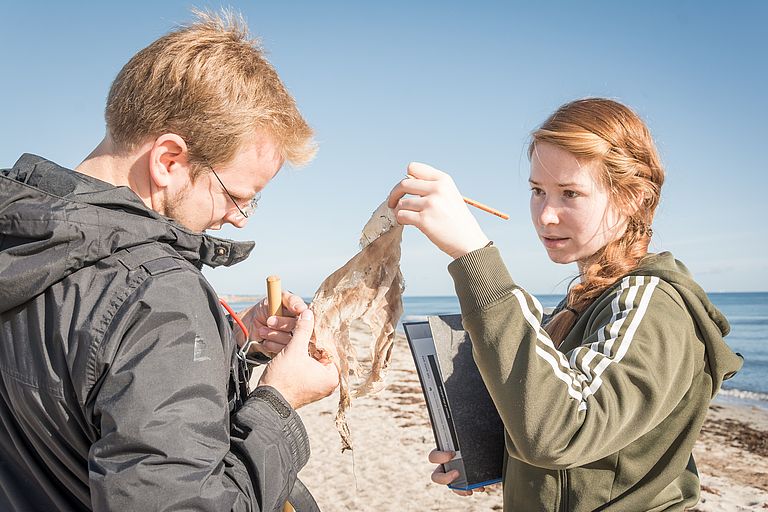
Along the investigated beach section, all finds are examined and assigned to a predefined category. Photo: Svenja Hardel, Future Ocean
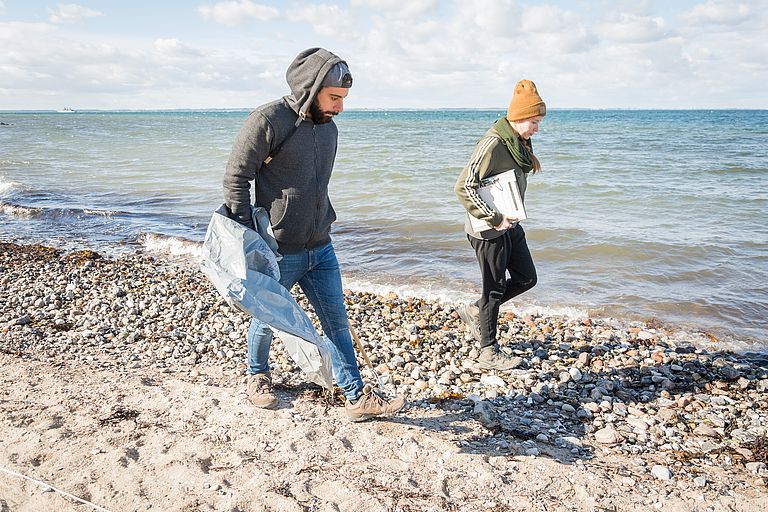
For the study, the researchers collected all litter items larger than 2.5 centimetres along a 100-metre stretch parallel to the coastline. Photo: Svenja Hardel, Future Ocean
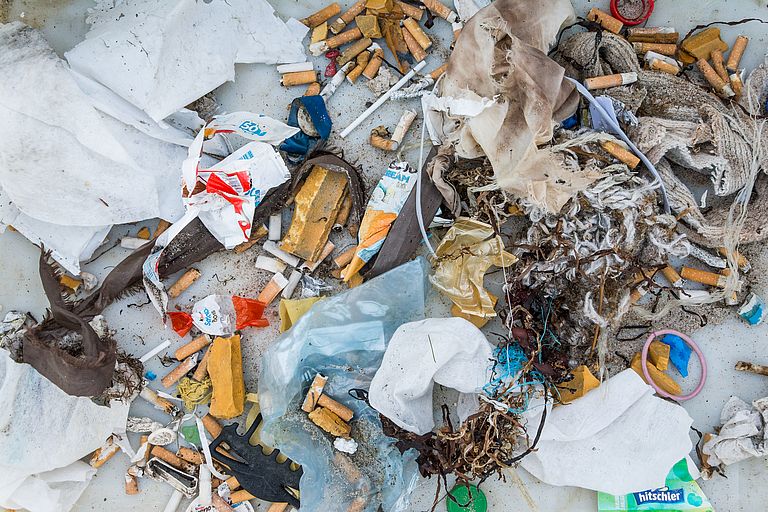
Finds from a beach investivation in September 2018. Photo: Svenja Hardel, Future Ocean
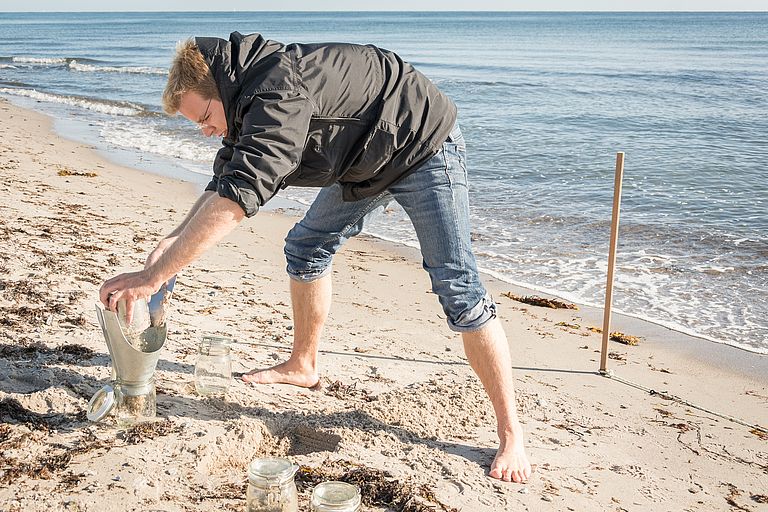
The researchers collect sediment samples for their microplastic analyses. Photo: Svenja Hardel, Future Ocean
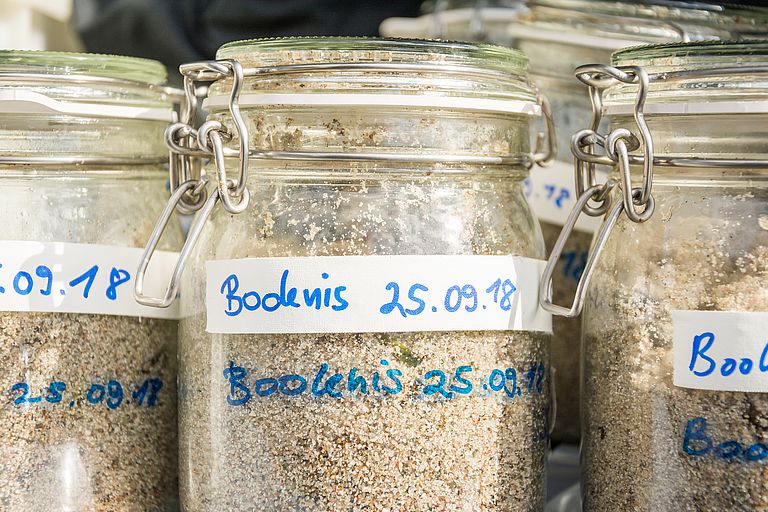
Sediment samples from Boknis Eck. Photo: Svenja Hardel, Future Ocean


